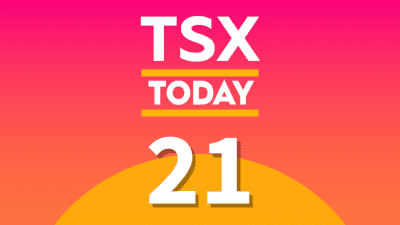The 60/40 portfolio is endorsed by many professional and retail investors alike. While not returning as much as a 100% stock portfolio, or being as safe as a 100% bonds portfolio, the 60/40 provides the best overall risk-return profile, and is a great long-term strategy.
Investors looking to implement a 60/40 portfolio have a variety of means to do so, thanks to the abundance of exchange-traded funds (ETFs). For Canadians, my advice is simple and cheap.
For the 60% stock side, hold a combination of U.S., international, and Canadian stocks. For the 40% bond side, hold a combination of Canadian government and high-quality corporate debt. Let’s take a look at the best ETFs for this.
Option 1: VEQT & ZAG
For the stock portion of your portfolio, you can use Vanguard All-Equity ETF Portfolio (TSX:VEQT). For a low management expense ratio (MER) of 0.24%, you get instant exposure to over 13,526 stocks.
VEQT is incredibly diversified, comprised of 80% large-cap, 12% medium-cap, and 8% small-cap stocks, allocated worldwide across 43% U.S., 30% Canadian, 20% developed, and 7% emerging markets.
You can then combine VEQT with BMO Aggregate Bond Index ETF (TSX:ZAG). ZAG tracks the broad investment-grade, fixed-income market, by holding federal, provincial, and corporate bonds with a high credit quality. The MER is 0.09.
Holding VEQT and ZAG in a 60/40 allocation will cost you an overall MER of 0.18% to hold, which is extremely cheap. Rebalancing between the two is relatively simple with just two ETFs to manage.
Option 2: XAW, XIC, & ZAG
If you don’t mind some additional complexity in your portfolio in exchange for saving on the MER, replacing VEQT with a combination of BlackRock iShares MSCI All Country World Ex Canada Index ETF (TSX:XAW) and Shares Core S&P/TSX Capped Composite Index ETF (TSX:XIC) could work.
XAW contains a total of 9,440 stocks from all market caps, split roughly between the following: U.S. markets at 62%, developed markets at 26%, and emerging markets at 12%. For a 0.22% MER, you get some fantastic diversification. XIC on the other hand tracks 241 stocks from the Canadian market. It also has a lower MER of 0.06%.
A 60/40 portfolio using 40% XAW, 20% XIC, and 20% ZAG would cost you an overall MER of 0.136% to hold, which is cheaper than the first option but slightly more difficult to rebalance. The advantage of this portfolio is that you can adjust the weight of the Canadian stocks to your liking by buying more or less XIC.
Option 3: VBAL
If all this talk of rebalancing makes you weary, there is a one ticket solution with Vanguard Balanced ETF Portfolio (TSX:VBAL). You can think of VBAL as 60% VEQT and a 40% Canadian, U.S., and global bond allocation built in. Essentially, it’s a complete 60/40 portfolio tucked away in just one ETF.
Like VEQT, VBAL will cost you a higher MER of 0.24% to hold. This higher MER comes with the bonus of not having to worry about rebalancing. There’s no need to fret over your allocation to each ETF with VBAL. Simply buy frequently, reinvest dividends, and hold for the long term.









